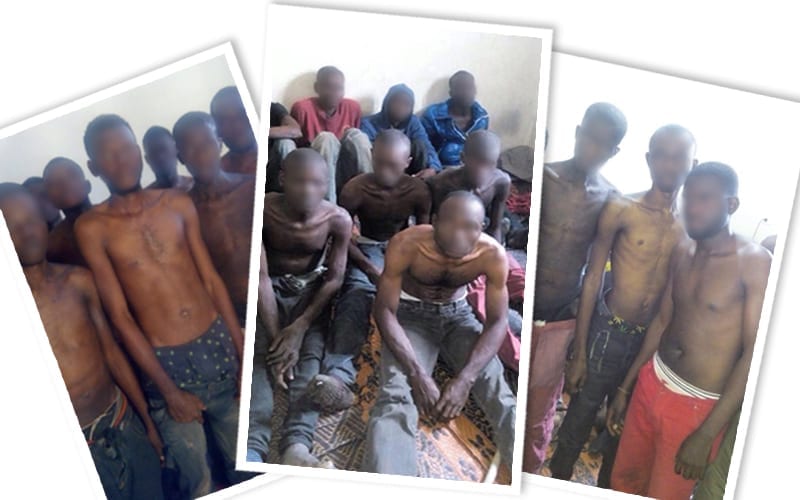
Libyan Slave Markets: A Symptom of a Global Crisis
Video showing men auctioned in Libyan slave markets, released by CNN in November 2017, has shocked the world and exposed the horrific reality of modern-day slavery. The video, captured by CNN hidden cameras, depicts one of what is believed to be many markets in Libya where migrants from sub-Saharan Africa are sold as “merchandise.”
The International Organization for Migration (IOM) first reported on the Libyan slave markets in April after learning of their presence by survivors. Libya is a major transit hub for migrants and refugees traveling to Europe with over 150,000 people departing from its shores yearly. Migrants and refugees often spend their life savings paying smugglers to help them transit from their home country, to Libya, across the Mediterranean, and eventually, to Europe. However, European nations have placed pressure on and provided support to Libya in an effort to stem the migration flow. This has led to thousands of migrants being trapped in Libya at the mercy of their smugglers – it is estimated that there are anywhere between 400,000 to 1 million migrants and refugees currently stuck. With fewer boats departing, smugglers and other criminal networks have turned to the slave trade as a means of continued income and exploitation. Men are sold primarily as laborers, while women are sold as sex slaves or forced into prostitution. Individuals are often forced to call family members under duress asking for ransom payments, and even if a ransom is paid it is not a given that their family member will be released.
This is, unfortunately, just one horrendous example of how migrants and refugees are vulnerable to modern-day slavery and how failed states serve as an incubator for criminal activities and human rights abuses such as slavery and trafficking. Since the NATO-backed overthrow of Muammar Gaddafi in 2011, Libya has devolved into chaos with limited rule of law and factional violence. This coupled with its status as a transit hub has empowered smugglers and organized crime groups to conduct their business with impunity. The weak UN-backed government has little capacity and there is no process for registering the migrants and refugees that continue to arrive, creating a system where it is easy to disappear without a trace. Further, Libya’s overcrowded, unsafe, and, often, unmanaged detention centers provide smugglers with a never-ending flow of potential “merchandise.” Al Jazeera’s Counting the Cost reports on these atrocities.
While many countries have been quick to condemn the presence of slave-markets, there have not yet been unified actions to address the issue. Ultimately, the best way to combat Libyan slave markets is a fully functioning government that is able to control its territory as well as improved conditions in sending countries that reduce the number of refugees and migrants seeking safety and opportunity in Europe. Though developing capacity and governance in Libya is a long-term project, it is important for the international community to acknowledge that a global effort is required.
In recent days the UN-backed Libyan government has launched an investigation, the United Nations has discussed sanctions, the African Union has called for a full investigation, and the U.S. Ambassador to the United Nations Nikki Haley has called it one of the greatest violations of human rights and dignity. Though these are all necessary calls to action, they miss the global responsibility of Libya’s transition to a failed state and Europe’s role in encouraging Libya and other migrant hubs to restrict movement to Europe, despite well-documented human rights abuses.
While the chilling video and stories out of Libya provide us a first-hand account of modern-day slavery, it is important to remember that these activities occur around the world – though usually more underground – and are not limited to failed states or developing countries. Approximately, 40.3 million people were victims of modern slavery in 2016 making this a truly global crisis.
